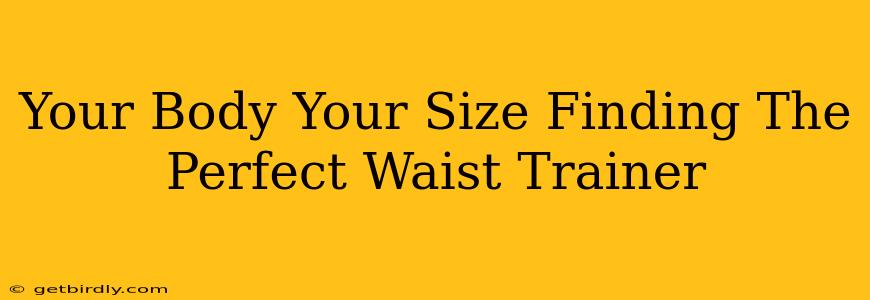Your Body, Your Size: Finding the Perfect Waist Trainer
Waist training has become increasingly popular, with many seeking to achieve a more sculpted midsection. However, finding the right waist trainer can be challenging, given the wide array of styles, sizes, and materials available. This comprehensive guide will help you navigate the process, ensuring you choose a waist trainer that complements your body type and goals, promoting comfort and safety.
What is Waist Training?
Waist training involves wearing a corset-like garment, typically made from latex, spandex, or a combination of materials, to compress the abdomen and create a smaller waistline. It's important to differentiate waist training from simple shapewear; waist trainers are designed for more intensive compression and are worn for longer periods. The effects are temporary, and results vary depending on individual body types and consistent use.
Choosing the Right Size: A Crucial Step
Selecting the correct size is paramount for both effectiveness and comfort. A waist trainer that's too tight can be incredibly uncomfortable, potentially leading to breathing difficulties or even injury. Conversely, a waist trainer that's too loose won't provide the desired shaping effect.
Most reputable brands provide detailed sizing charts. Measure your natural waistline at its smallest point, typically just above your belly button. Compare this measurement to the brand's sizing chart to determine your appropriate size. Don't hesitate to order one size up if you're between sizes – comfort should always be prioritized.
How Tight Should a Waist Trainer Be?
A properly fitted waist trainer should feel snug but not restrictive. You should be able to comfortably breathe and move around without experiencing significant discomfort. A slightly uncomfortable feeling is expected initially, as your body adjusts to the compression. However, any intense pain or difficulty breathing indicates the waist trainer is too tight and needs to be loosened or replaced.
Types of Waist Trainers: Exploring Your Options
Several waist trainer types cater to different needs and preferences:
-
Latex Waist Trainers: Known for their strong compression and sweat-inducing properties, latex trainers are popular for those aiming for significant waist reduction. However, they can be less breathable than other materials.
-
Spandex Waist Trainers: Offering a comfortable and flexible fit, spandex waist trainers are often preferred for everyday wear. They provide moderate compression and are more breathable than latex versions.
-
Steel-Boned Waist Trainers: These offer more structured support and shaping, particularly beneficial for those seeking a more dramatic hourglass figure. However, they tend to be less flexible and may require a longer adjustment period.
What Material is Best for Waist Training?
The best material depends on your preferences and goals. Latex is ideal for intense compression and sweating, but it might not be suitable for sensitive skin or long periods of wear. Spandex offers more comfort and breathability, while steel boning provides superior structure and support. Consider your activity level and comfort level when selecting the material.
How Long Should I Wear a Waist Trainer?
Start with shorter durations, gradually increasing the wearing time as your body adjusts. Begin with 1-2 hours daily and increase by 30-minute increments as tolerated. Never wear a waist trainer while sleeping. Listen to your body; if you experience discomfort, remove the waist trainer immediately.
What are the Potential Risks of Waist Training?
While waist training can achieve temporary aesthetic changes, potential risks include:
- Breathing difficulties: Excessive compression can restrict breathing.
- Back pain: Improper posture or excessive compression can strain the back.
- Organ displacement: Extreme compression can potentially displace internal organs.
- Skin irritation: Materials may cause irritation or allergic reactions in sensitive individuals.
It's crucial to consult a healthcare professional before starting a waist training regimen, especially if you have pre-existing medical conditions.
Can Waist Training Help with Weight Loss?
Waist training itself does not directly contribute to weight loss. It primarily alters your appearance by compressing your abdomen. However, combining waist training with a healthy diet and exercise regimen can indirectly support weight loss goals by improving posture and potentially enhancing workout intensity.
How Can I Maintain My Waistline After Stopping Waist Training?
Maintaining your waistline after stopping waist training requires a commitment to a healthy lifestyle. Continue with regular exercise, a balanced diet, and mindful eating habits. Consider incorporating core strengthening exercises to maintain muscle tone.
Remember, choosing the right waist trainer is a personal journey. Prioritizing comfort, safety, and realistic expectations is crucial. By following this guide and listening to your body, you can find the perfect waist trainer to complement your body and goals.

